Jump to:
Protein treatments can help give hair a full, lustrous sheen, but too much protein in the hair can end up doing more harm than good. Read on to learn more about recognizing protein overload hair and what to do about it.
What Is Protein Overload Hair?
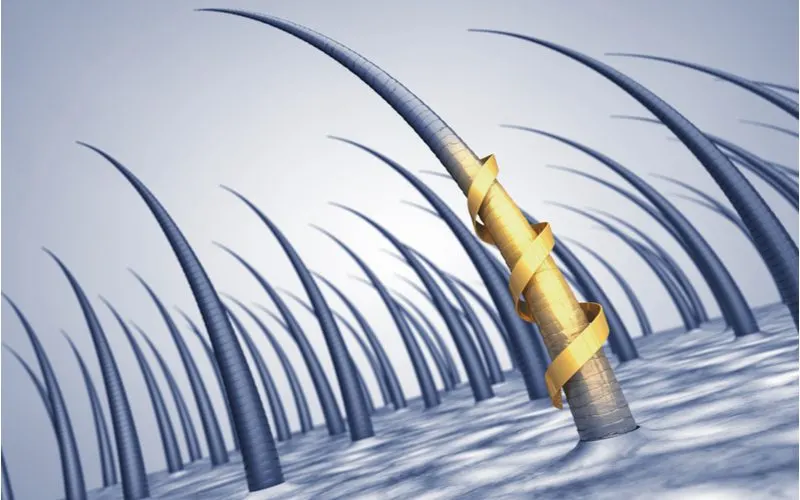
Nobeastofierce/Shutterstock
A protein overload can cause otherwise healthy hair to lose its shine, but fortunately, it’s a fairly easy problem to fix. Our hair contains a protein called keratin, a compound also found in your skin and nails.
A healthy keratin core gives hair bounce and elasticity. A tough outer cuticle keeps this core protected against the elements, and you need to keep this cuticle intact if you want a full, lustrous head of hair.
Protein treatments strengthen hair cuticles by coating strands in proteins such as keratin, healing cracks and breaks that may leave the core vulnerable to damage.
A little bit goes a long way, making it easy to overdo things when treating your hair. However, excessive protein treatments can build up and weigh down your hair, leading to issues such as:
- Split ends and breakage
- Limp, listless locks
- A loss of shine and bounce
- Dry, straw-like texture
- Shedding
It’s best to keep protein treatments to a minimum to avoid overloading your hair. However, if you notice signs of trouble, there’s no need to panic. With proper care, it’s fairly easy to treat a protein overload and prevent issues in the future.
The Signs of Protein Overload
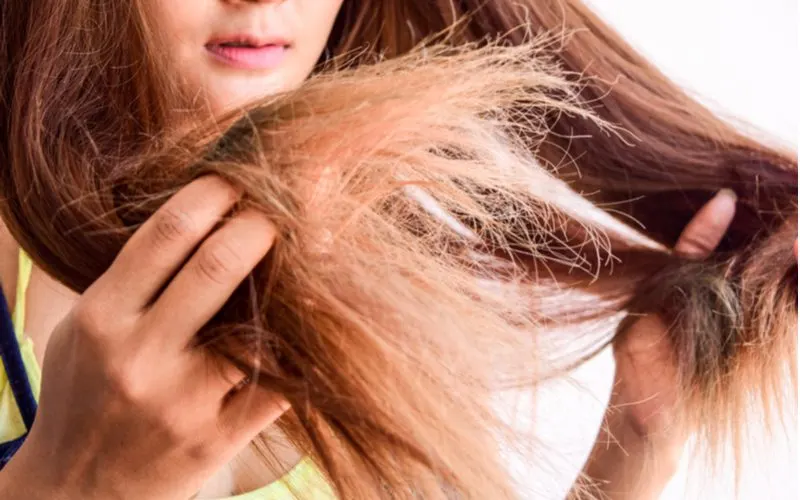
Koy Jang/Shutterstock
Protein overload hair will appear damaged much in the same way that bleached or chemically treated hair might look. There are a number of signs to watch out for when using protein treatments to ensure that you aren’t accidentally causing damage:
- Hair will appear limp, stringy, or even greasy
- You’ll see frequent split ends along hair tips
- Strands will snap and break instead of stretching
- Hair will feel dry or brittle to the touch
- You’ll see more unwanted frizz than usual
- Hair will lose its healthy shine
- There may be changes in hair texture or curl patterns
- Hair will shed more than usual
It can be easy to confuse the signs of protein overload with other types of hair damage. If you’re using protein treatments, pay close attention to how your hair reacts in the first few weeks.
If you notice any changes or signs of damage, it’s likely due to your new haircare routine rather than any chemical or environmental factors.
Fixing a Protein Overload
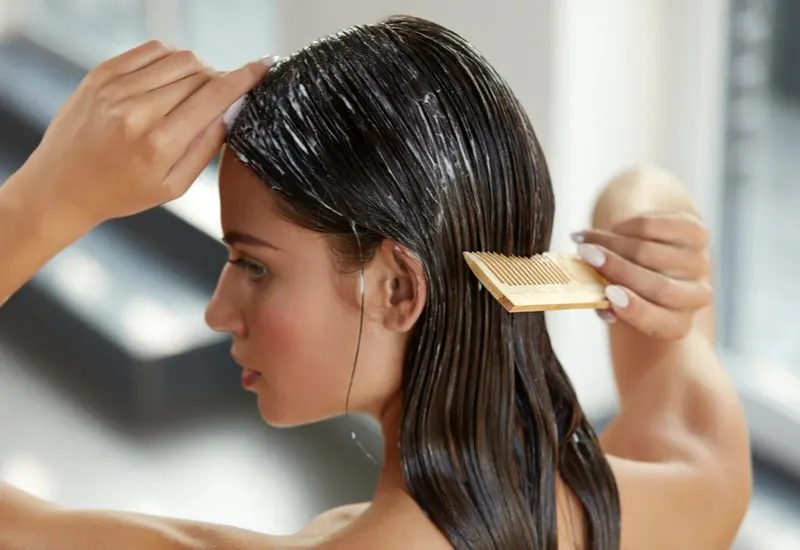
Puhhha/Shutterstock
If you’ve traced the root of your hair issues back to a protein overload, it’s time to take action. Fortunately, it’s easy to restore protein overload hair and repair damage in just a few simple steps:
1. Cleanse Your Hair
Protein overload is most often the result of product buildup sticking to your hair and scalp. The first step to fixing the issue is to strip away excess proteins along with other unwanted oils.
The best way to do this is by using a clarifying shampoo designed to break apart and lift proteins such as keratin that bond to your hair. Clarifying shampoos can be harsh, as they strip away natural oils as well as any excess product.
It’s important to choose a shampoo made to work with your hair type, whether you have straight locks, curls, oily hair, or dryness. If you find that clarifying shampoos are too harsh on your hair, you may be able to remove bonded proteins by using certain essential oils.
Peppermint oil, lavender, and clary sage help strip away proteins and other buildup. Some essential oils may even promote healthier growth in the future, reducing the need for protein treatments in the first place.
Read Next: How to Clarify Hair
2. Lock In Moisture
After cleansing your hair, you need to replenish and lock in moisture. Otherwise, you may still find yourself left with limp, lifeless hair. Your locks need plenty of hydration to maintain a healthy bounce and a lustrous shine, especially after any sort of deep cleaning treatment.
The best way to moisturize your hair after using a clarifying shampoo is with a deep conditioning treatment designed to penetrate the hair while smoothing and strengthening the outer cuticle.
You can also try a leave-in conditioner for all-day hydration and protection. Moisturizing hair masks are a fairly new trend in hair care, but they can make a world of difference for dry or protein-damaged hair.
The mask coats your hair in nourishing oils and nutrients designed to sink in and heal the cuticle. Most masks also work to improve scalp health and overall hair growth.
3. Schedule a Trim
After cleansing and moisturizing, you may notice that protein overload hair still shows signs of damage. The best course of action may be to trim off split ends and weak or damaged strands in some cases. Eventually, your roots will replace unhealthy hair with new thick, lush growth.
It’s best to take a break from your styling routine while growing out protein overload hair. Otherwise, you may end up causing the same damage to your new roots, perpetuating the cycle.
Instead, stick to gentle, natural products and avoid harsh protein treatments as your hair grows out. It may be best for people with hair susceptible to overload to avoid protein products altogether.
Hydrating masks and deep conditioning treatments offer a safer and gentler way to restore shine and bounce to dull hair with no risk of protein buildup.
Preventing Protein Overload
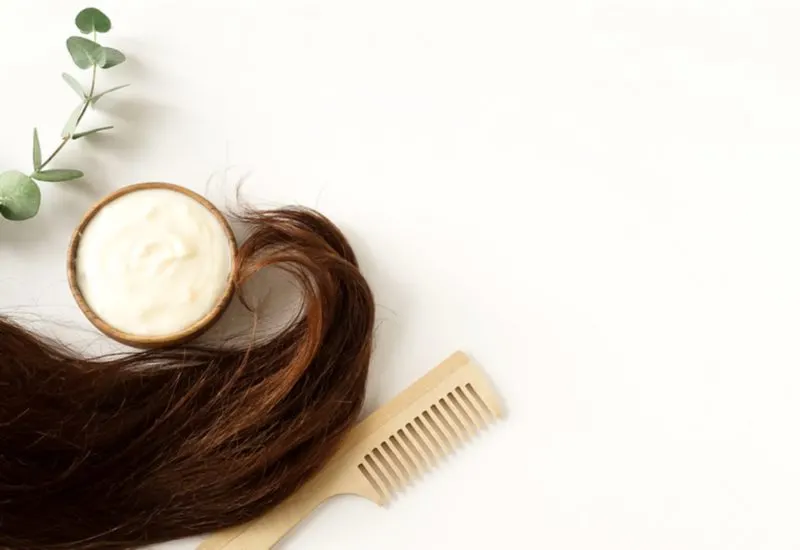
IrenaStar/Shutterstock
You can help prevent unnecessary damage to your hair by exercising care when using protein treatments and products containing keratin, collagen, or other common protein components.
Always follow the instructions on a product’s package, and when in doubt, consult your hairstylist for advice. Never layer protein products when treating your hair, as it increases your odds of overloading strands.
Instead, use products sparingly and don’t apply more often than recommended. If you use protein treatments regularly, it may be a good idea to use a clarifying shampoo once to twice per week to combat protein buildup preemptively.
Things to Consider
While overloading is a common problem for anybody using protein treatments, some people have hair that’s more susceptible to damage. Before starting a treatment schedule, there are a couple of things to consider to avoid causing a protein overload:
- Curly or heavily textured hair is more at risk of protein overload.
- Smooth, low porosity hair has more trouble absorbing products and is more susceptible to protein buildup.
- If you notice signs of overloading, adjust your treatment schedule to once per week or less.
- In extreme cases, you may want to visit a professional for help rethinking your hair care routine.
Frequently Asked Questions
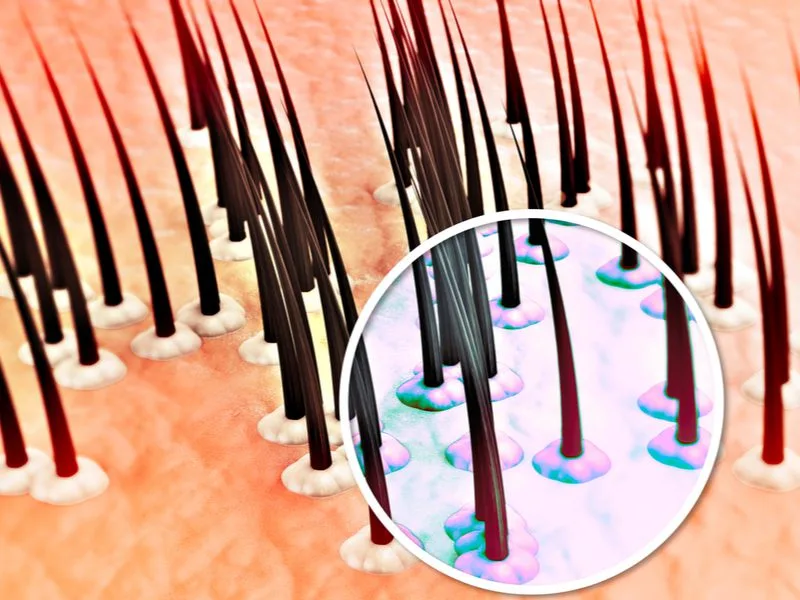
Naeblys/Shutterstock
Protein overload in hair can be a bit complicated. If you still have questions, review the answers to popular inquiries below.
How do you fix protein overload in hair?
If your hair is suffering from symptoms of protein overload, the best thing you can do is cleanse and moisturize. Strip away protein buildup with gentle hair care products or essential oils, then lock in moisture with a deep condition or a leave-in conditioner. You should avoid any products that contain proteins such as:
- Wheat, rice, or quinoa protein
- Hydrolyzed collagen
- Keratin
- Biotin
- Amino acids
- Soy protein
- Silk protein
How long does it take to fix protein overload hair?
While protein overload is a fairly easy problem to fix, it takes patience and dedication to restore your hair to its full glory. Depending on how damaged your hair is, it can take anywhere between four and six weeks of treatment to repair protein overload.
How do I know if I have protein overload hair?
You can often identify protein overload in hair from appearance alone. Locks will look limp, dull, and lack their usual luster. Hair will also lose elasticity, so strands tend to break instead of stretch when you tug or pull on them.
Keep in mind that the signs of protein overload can be similar to chemical or heat damage. If you have a harsh hair care routine, the damage you see might have another root cause besides protein buildup.
How can I tell if my hair needs more protein?
Protein treatments aren’t always bad news for hair. In many cases, a conservative treatment schedule will help to keep hair shiny, bouncy, and moisturized. If your hair is in need of more protein, you can usually tell by its texture. Tacky, gummy-feeling hair can often benefit from a protein treatment.
Why does my hair feel rubbery?
Gummy or rubbery hair is often a sign of damage to your hair’s internal keratin structure. Hair damaged by chemical treatments may also feel like this. A mild protein treatment can help restore softness and shine to hair, but too much will lead to dryness and breakage.
So, What Is Protein Overload Hair?
When you overdo your regular protein treatments, you may notice your hair starting to look limp and lackluster. While proteins such as keratin can help strengthen hair, too much will do more harm than good.
If you notice signs of protein overload, you can fix the issue by cleansing, moisturizing, and adjusting your hair care schedule.
